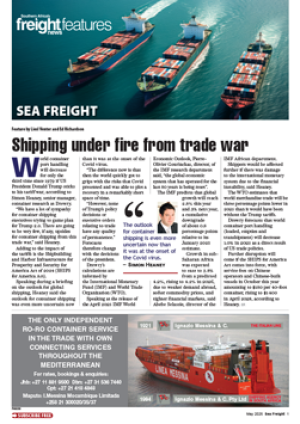Sometime before the world’s attention was grabbed by drones delivering beer during the opening game of the recent Fifa World Cup in Russia, a similar experiment in autonomous driving technology took place in the US.
In October 2016, a self-driving semi-trailer 18-wheeler Volvo truck drove 214km down the highway from Fort Collins through Denver to Colorado Springs, taking 51 744 cans of Budweiser to market.
Apart from the irony that both instances involved beer, which tends to affect self-control, both experiments “were highly controlled,” said renowned innovation pundit, Arthur Goldstuck. The owner of technology research outfit, World Wide Worx, added that essentially what the trucking company, Otto, was doing was to let the vehicle drive itself once it was out of the city centres. “It still took a human to drive it onto and off the highway.”
“Although the experiment didn’t do away with the driver yet, it’s not a vast leap from the truck driving itself on the highway to the truck driving itself altogether,” Goldstuck said. The driver in question, Walter Martin, spent most of the journey on Interstate 25 in the sleeping berth of the truck, and looked on as the steering wheel gently turned this way and that without him laying a hand on it. Interestingly, the truck was a “level 4” autonomous vehicle according to the Association of Automotive Engineers’ classification system for driverless technology.
Goldstuck indicated that if it was “level 5”, the anticipated next step in autonomous driving, “the steering wheel would’ve been optional and the driver’s presence not required”. Getting back to the human ‘role’ in the Colorado delivery, Martin said he “still had to do the picking up and loading of the freight, making sure it was secure in the back of the truck”.
Of course he needed to be there if anything had gone wrong, but all in all the delivery to a supermarket was safe and on time. For Otto, a San Francisco tech start-up that made a name for itself developing and manufacturing the kind of on-board sensors enabling driverless tech, the experiment showed that their system could effectively control “the acceleration, braking, and steering of the truck to carry the beer exit-to-exit without any human intervention”.
The company, which last year was bought by ride-hailing service, Uber, went on to state that in future, “when you see a truck driving down the road with nobody in the front seat, you’ll know that it’s highly unlikely to get into a collision”. Otto is also confident of eradicating driver aggression, fuel wastage, delayed delivery and other issues hampering effective, point-to-point logistics.
Commenting on his company’s driverless tech, Otto co-founder, Anthony Levandowski, said the beer trip heralded “the next area of transportation innovation". “It’s like a train on software rails.” Detractors of driverless tech, however, are far from being so sure that the Otto delivery stands for a fool-proof future of driverless freight. After all, a few months before the beer trip, Joshua Brown, the owner of a Tesla autonomous car, died when his sensors failed to detect the difference between a white truck and a washed-out sky. However, forging ahead with innovation was the whole point, said Goldstuck, because IT-momentum was a self-propelling force that couldn't be stopped, and either you joined the juggernaut of technological progress or you got left behind.
On that topic, Goldstuck added that it’s important to consider the implications that autonomous steering technology could have on our labour market.
“If self-driving trucks became commonplace elsewhere it won't happen in South Africa. At least not in our generation. The unions won't allow it.” The reality is, resisting progress can be perilous for economic growth, as integration with industry 4.0, or the 4th industrial revolution and all its manifold innovations, is uppermost in the mind of investors the world over.
Were driverless tech to become the norm, South Africa might eventually be forced to accept it, Goldstuck said.
INSERT
It’s not a vast leap from the truck driving itself on the highway to the truck driving itself altogether. – Arthur Goldstuck
CAPTION
The self-driving Volvo truck that delivered beer in Colorado

